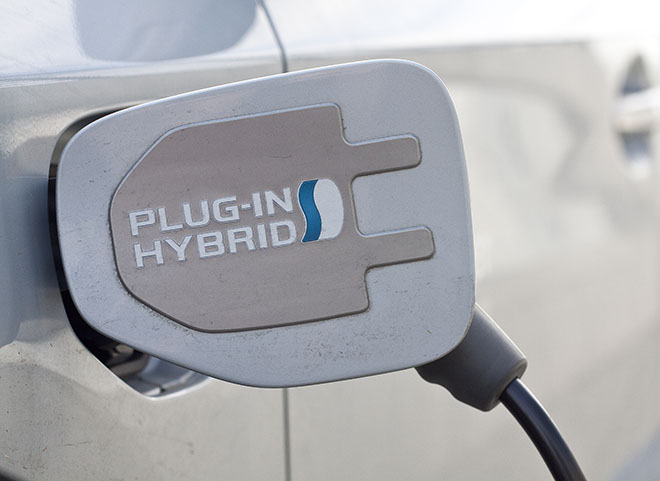Sometimes it seems automakers will try any powertrain technology in order to avoid selling battery-electric vehicles. First diesels, then hydrogen, were touted as ways to reduce CO2 emissions while still maintaining the fill-er-up-with-fossil-fuel business model (and continuing to crank out the colossal SUVs that carmakers claim consumers crave). Many electric purists have long suspected that most PHEVs belong in the same category.
Now, as sales of PHEVs are surging in Europe, fueled by generous purchase subsidies and tax breaks, a series of tests commissioned by Transport & Environment confirms that emissions from the latest PHEVs are far greater than carmakers claim. In real-world testing, three of the most popular 2020 plug-ins in emitted much more CO2 than advertised.
Research on older PHEV models has found pretty much the same thing—a study by the International Council on Clean Transportation (ICCT) found that real-world CO2 emissions from plug-in hybrids were typically two to four times the measurements given in their approval process.
In T&E’s recent testing, the BMW X5, Volvo XC60 and Mitsubishi Outlander emitted 28-89% more CO2 than advertised when tested by independent testing specialist Emissions Analytics on a fully charged battery in optimal conditions. On an empty battery, the PHEVs emitted 3 to 8 times more than official values. When driven in battery-charging mode (which forces the battery to charge, in order to enable a spell of driving in pure electric mode), they emitted 3 to 12 times more.
“Plug-in hybrids are fake electric cars, built for lab tests and tax breaks, not real driving,” said Julia Poliscanova, Senior Director for Clean Vehicles at T&E. “Our tests show that even in optimal conditions, with a full battery, the cars pollute more than advertised. Unless you drive them softly, carbon emissions can go off the charts. Governments should stop subsidizing these cars with billions in taxpayers’ money.”
Some automakers have countered the criticism by suggesting that motorists need to learn new emissions-minimizing driving habits, which sounds like a tall order. The T&E and ICCT reports focus only on emissions that exceed advertised levels—they don’t address another major drawback of PHEVs. In jurisdictions that offer perks for plug-ins, many drivers buy PHEVs with no intention of ever plugging them in. Toyota, for one, seems to consider this a selling point—it once ran a TV ad that touted the fact that plugging in the Prius Plug-In was strictly optional.
“Carmakers blame drivers for plug-in hybrids’ high emissions,” says Julia Poliscanova. But the truth is that most PHEVs are just not well made. They have weak electric motors, big, polluting engines, and usually can’t fast charge. The only way plug-ins are going to have a future is if we completely overhaul how we reward them in EU car CO2 tests and regulations. Otherwise PHEVs will soon join diesel in the dustbin of history.”
Source: Transport & Environment



















































































